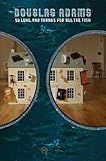Sankt-Peterburg, as the Russians call it, is the most graceful of all Russian cities. It was built by Peter the Great at the beginning of the 18th century on swamps at the head of the Gulf of Finland and was the capital of Russia until 1920. The young Tsar wished to modernize Russia and bring it closer to the culture of Western Europe. This is the reason for the western style of architecture prevalent in all the palaces and stately homes of the aristocracy.
Many of these line the canals that were built to drain the swamps, hence the name "Venice of the North." These palaces have survived the revolution of 1917, 70 years of communist government (when it was renamed Leningrad) and three years of siege by the Nazi armies in World War II. The overall atmosphere of the city and the attitude of its residents are much friendlier and more easy going than you find in Moscow.
The prime attraction of St. Petersburg is the great Winter Palace, the Hermitage, which houses one of the world's greatest art collections. Although the palace faces the large open Palace Square ( Dvortsovaya Ploshad) the entrance for visitors is from the rear, which faces the Neva River. The collection is so huge, that you cannot see it all in one day. In fact, only a portion of the immense collection is actually on display. The collection was started by Catherine the Great in 1764. Subsequent Tsars all added to the pictures, sculptures, furniture and china with purchases made all over the world . After the Revolution, collections from other palaces throughout Russia were also brought here by the Soviet government.
The exhibits are arranged roughly in chronological order, so if you have limited time, select the period of greatest interest to you and concentrate on it. You should not miss the Malachite Hall, room 189 on the third floor (second floor by American counting), with its columns of this dark green semi-precious stone. The impressive collection of Impressionists and Post-Impressionists is on the top floor. The Hermitage museum is open every day, starting at 10:30. You should plan on being there early. The various sections start closing down an hour before closing time, beginning with the top floor.
While you are on an upper floor, make sure you admire the view across the Neva river to the Peter and Paul Fortress (Petropavlovskaya Krepost). On the opposite side of the building, you have another great view across the enormous open square and of the Alexander column cut from a single 700 ton piece of red granite. It is in this square that many of the demonstrations against the Tsars took place. From here also the Bolsheviks staged the assault on the democratic government of Kerensky in October 1917.
The large building of the Admiralty, topped by a golden spire, dominates the square on its western side. In its garden, facing the river, the large, bronze statue of a horseman represents Peter the Great crushing a snake, symbol both of Sweden, which he defeated, and of the "evils" of old backward Russia, that he wished to subdue.
The great churches of St. Petersburg were turned into museums during the communist era, or they gradually fell into the ruin of neglect. Most of them are now being restored to their full glory. The skyline close to the Neva river is dominated by the great golden dome of St. Isaac's Cathedral, close to the Admiralty. Built in the 19th century, its interior is decorated with murals and mosaics created by Russia's greatest artists.
Samet Bilir is a toy collector and writes about toys and games at his blog. You can check his website for toy news, pictures, videos, and reviews, such as baby toy dolls, and doll house toys.


























































No comments:
Post a Comment
Please leave us some love...and have yourself a groovy day~!! Peaces...xoxo